Have you ever wondered what life was like in New York City in the 1970s? Here are some people, places, and sights that will give you an idea about whether life in the Big Apple was different back then…or if some things never change! You decide as you view these vintage photos of New York City in the 1970s.
New York Subway



New York City’s first official subway opened in 1904 and cost a nickel to ride. The 1970s were known as the “Subway Graffiti Era” – riders were often surrounded by graffiti on the subway walls. Unfortunately, New York was in a budget crisis in the 70s and lacked the funding to combat both graffiti and the crime that occurred on all its modes of transit, including pick pocketing, muggings, and fare evading to name a few.
Police Scooters – Italian Style

The New York Police Dept bought a large fleet of Innocenti Italian scooters for use in patrolling the streets of the city around the early 1970s. They were painted dark green and white which were the NYPD colors at the time. Later the Italian scooters were replaced with Spanish scooters which were painted blue and white – the version most associated with NYPD. One of these is now in the New York Police Museum. Around 1976 or 77 another switch was made to the Vespa Sprint. Vespa pulled out of the US in the early 1980s…NYPD kept the scooters running for as long as possible, but they are no longer feasible for use by the NY police dept.
The Brooklyn Bridge June 1974 – Vintage Photos of New York City in the 1970s
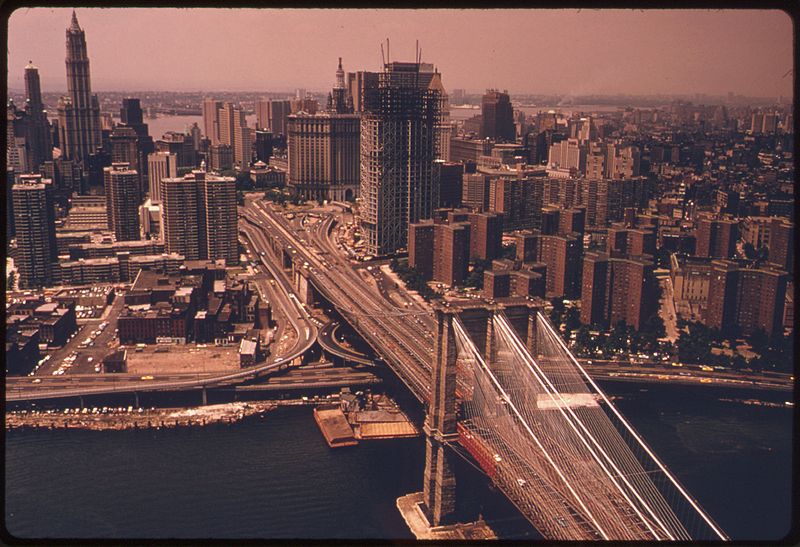
The Brooklyn Bridge is a hybrid cable-stayed/suspension bridge that crosses the East River between Manhattan Island and Brooklyn on Long Island. When it opened on May 24, 1883, it was the longest suspension bridge in the world at the time. It carried elevated trains until 1944, streetcars until 1950, and now allows cars, bicycles, and pedestrians only. A major tourist attraction since it opened, it is an icon of New York City and has been designated a National Historical Landmark and a National Historic Civil Engineering Landmark.
Plum Beach, Brooklyn May, 1973


Plumb Beach (sometimes spelled “Plum”) is a beach and surrounding neighborhood along the north shore of Rockaway Inlet in the New York City borough of Brooklyn. Since 1972 it has been part of Gateway National Recreation Area. Unfortunately, the area is known to be a somewhat dangerous late-night spot.
New Amsterdam Theater – Vintage Photos of New York City in the 1970s
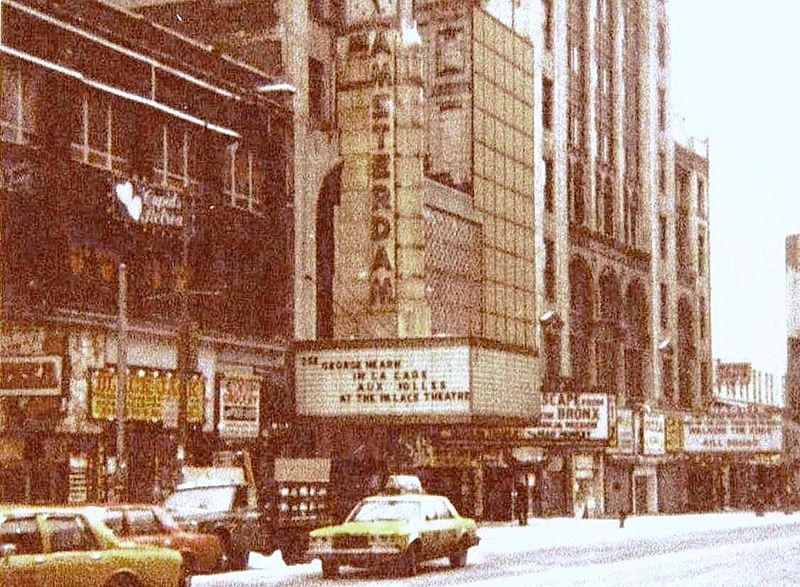
Built between 1902 and 1903, the New Amsterdam Theater is located at 214 West 42nd Street in the Theater District of Manhattan, off Times Square. The Beaux-Arts exterior and the Art Nouveau interior of the building were designated New York City Landmarks in 1979, and the location was added to the National Register of Historic Places in 1980. It is one of the oldest surviving Broadway venues.
Coney Island, 1973


In 1973, a group of kids climbed through a broken fence to play on the abandoned “Giant Slide” at Coney Island. The intruders had the abandoned “Parachute Jump” ride nearby at their disposal, as well! Amusement parks were built in this location during the late 19th century and reached their peak attendance during the first half of the 20th century. But their popularity declined after World War II and years of neglect followed. Various redevelopment projects were proposed during the 1970s through the 2000s, but most were not carried out. The area was finally revitalized with the opening of MCU Park (minor league baseball stadium) in 2001.
Jamaica Bay, 1973 – Vintage Photos of New York City in the 1970s


Jamaica Bay is a partially man-made, partially natural estuary on the southern portion of the western tip of Long Island. The Jamaica Bay Wildlife Refuge includes 12,600 acres of saltmarshes, freshwater ponds, fields, and woods. It is one of the largest bird habitats in the northeastern United States and is a great place to watch seasonal bird migrations, as well as resident species. The Wildlife Refuge was created in the 1950s by the NYC Dept. of Parks, and the site became part of the National Park Service in 1972 when the Gateway National Recreation Area was established.
The Staten Island Ferry, 1973


The Staten Island Ferry is a passenger ferry route operated by the New York City Department of Transportation. It began service in 1817 and runs 5.2 miles through New York Harbor between the New York City boroughs of Manhattan and Staten Island. Ferries depart every 30 minutes, 24 hours a day, 7 days a week, and the round trip takes approximately 25 minutes. Fares have always relatively low compared to other modes of transportation in New York, but the ride became free in 1997. The ferry is popular with commuters, and with tourists and visitors due to the views offered of New York Harbor and the lower Manhattan skyline. For a time, night service ceased in July of 1975 due to the mid-1970s NYC fiscal crisis, however it was restored in the 1980s when two boats were put in service specifically for off-peak and night voyages.
Sheepshead Bay, 1973 – Vintage Photos of New York City in the 1970s


Sheepshead Bay is a neighborhood in southern Brooklyn, named for an edible fish found in the bay’s waters. The area became populated by Jewish and Soviet immigrants during the late 20th century; by 1979 it was a more racially diverse neighborhood with an increasingly elderly population. The area was zoned during the 1970s to promote waterfront retail and housing developments.
East River Park


East River Park is a 57.5-acre public park located on the Lower East side of Manhattan. It runs along the East River from Montgomery St. to 12th St. on the east side of FDR Drive. The park has football, baseball, and soccer fields; tennis, basketball, and handball courts; a running track; bike paths; and areas for fishing. In 2001, the park was re named John V. Lindsey East River Park to honor the city’s 103rd Mayor who served from 1966 to 1973, a difficult period of social and political unrest. Lindsey’s efforts to maintain racial harmony resulted in the city being spared from the social riots and uprisings that took place in other large cities in the US during the 1970s.
Union Square – Vintage Photos of New York City in the 1970s
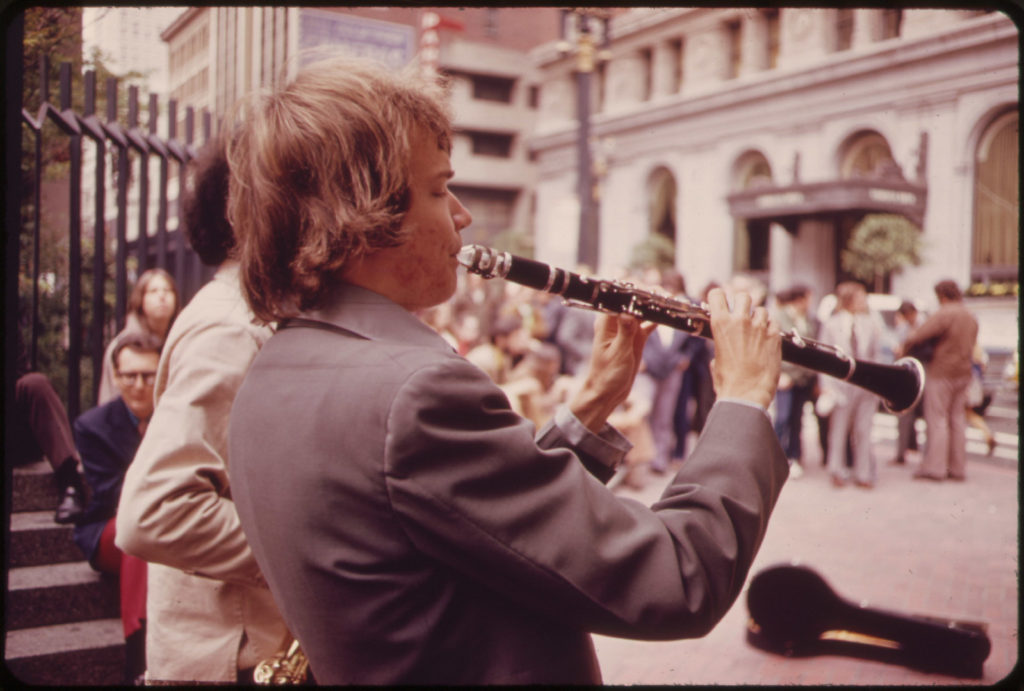
Union Square is an historic intersection and neighborhood in Manhattan, located where Broadway and the former Bowery Road (now Fourth Ave.) came together in the early 19th century. It is a popular meeting place given its central city location and its many nearby subway routes. There are numerous bars and restaurants on the periphery of the square making it a lively and popular destination. In 1976 the Council on the Environment of New York City established the Greenmarket program, which provided small, family farmers with the opportunity to sell their vegetables, fruits, and other farm fresh products at open air markets in the Square.
Herald Square


Herald Square is a major retail and commercial hub in Midtown Manhattan at the intersections of Broadway, Sixth Avenue (Avenue of the Americas), and 34th Street. It was named for the now defunct New York Herald newspaper, formerly headquartered there. The most notable retail attraction is Macy’s Herald Square, the company’s flagship department store the largest Macy’s in the United States. Free promotional items are sometimes given out to drive customers in when new stores open in the area.
The RKO Bushwick Theatre – Vintage Photos of New York City in the 1970s
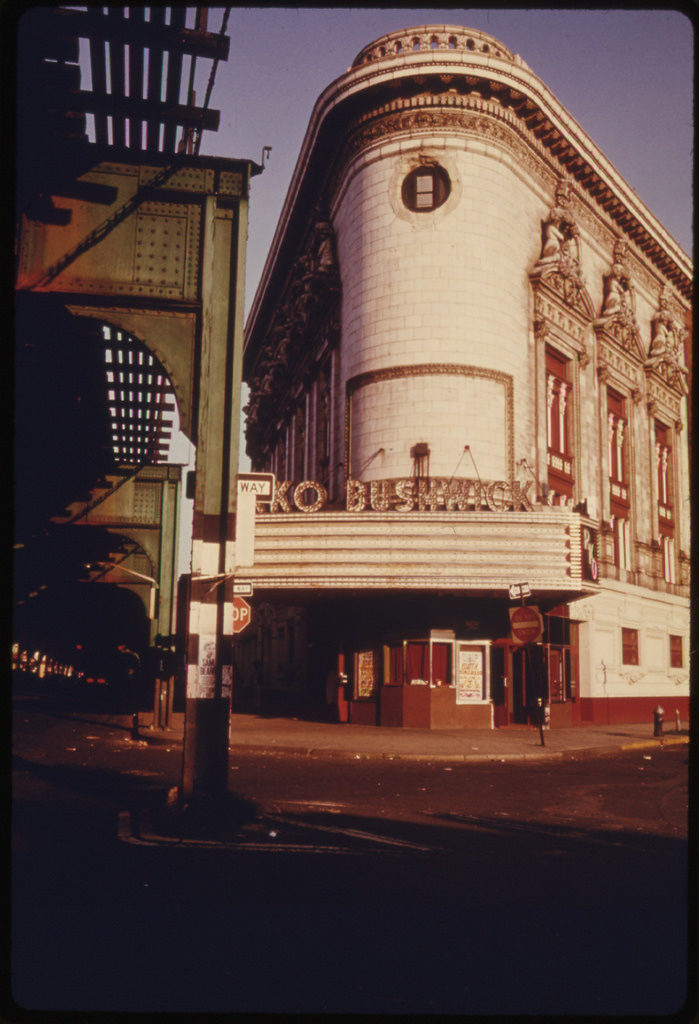
The RKO Bushwick Theatre opened on September 11, 1911 and was once Brooklyn’s largest and most magnificent vaudeville location with seating for 2500 patrons. During its heyday in the 1920s and 1930s the theatre featured the biggest vaudeville acts and headliners of the time, including Ethel Barrymore and Lily Langtry. By the 1970s the theatre had fallen on hard times and was converted into a church known as Pilgrim Baptist Cathedral. When the church later abandoned the building, it slowly fell into disrepair. Today, the façade of the theatre is all that remains, and it has been preserved as part of the Acorn High School for Justice building which was constructed in 2004.
Lynch Park, Brooklyn



Latin youths at Lynch Park in Brooklyn, June 1974. This inner-city area has historically been populated by African Americans, Hispanics, and low income Caucasians.
The Brooklyn Polytechnic Institute – Vintage Photos of New York City in the 1970s
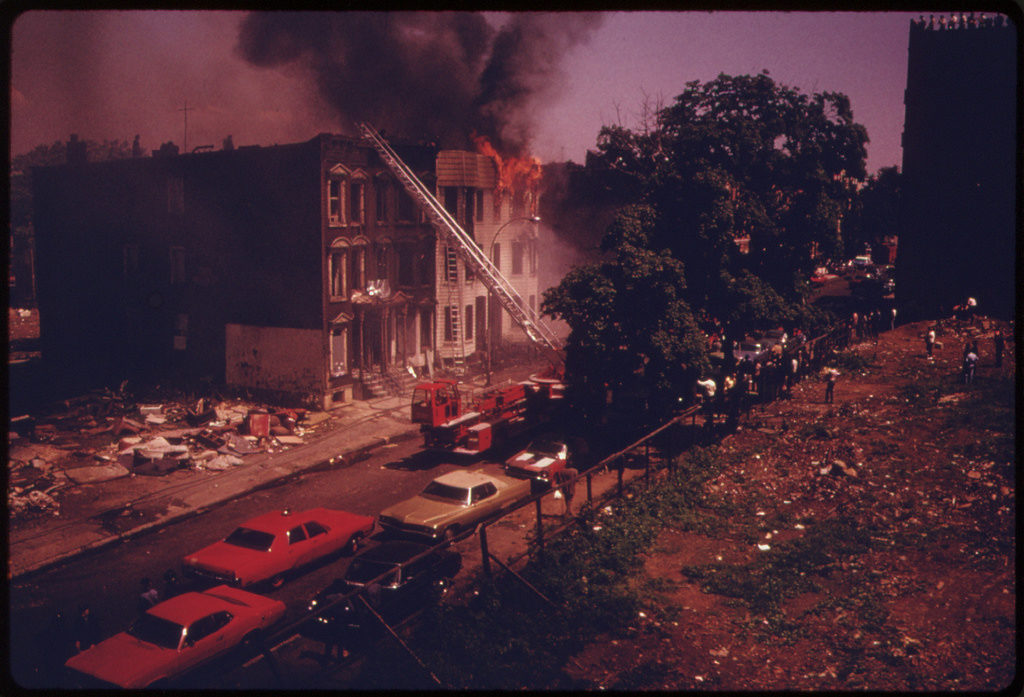
The Brooklyn Polytechnic Institute was founded in 1854 as the Brooklyn Collegiate and Polytechnic Institute, and was originally an upper class college preparatory and finishing school for young men. By 1970, after budgetary difficulties and cutbacks in Federal science and engineering funds, the Institute found itself with very few students. In 1973 it merged with New York University’s School of Engineering and Science and became the Polytechnic Institute of NYU. This photo shows fires that were set in June, 1974 to test wires and insulation in NYC.
Kosciusko Public Swimming Pool, Bedford-Stuyvesant
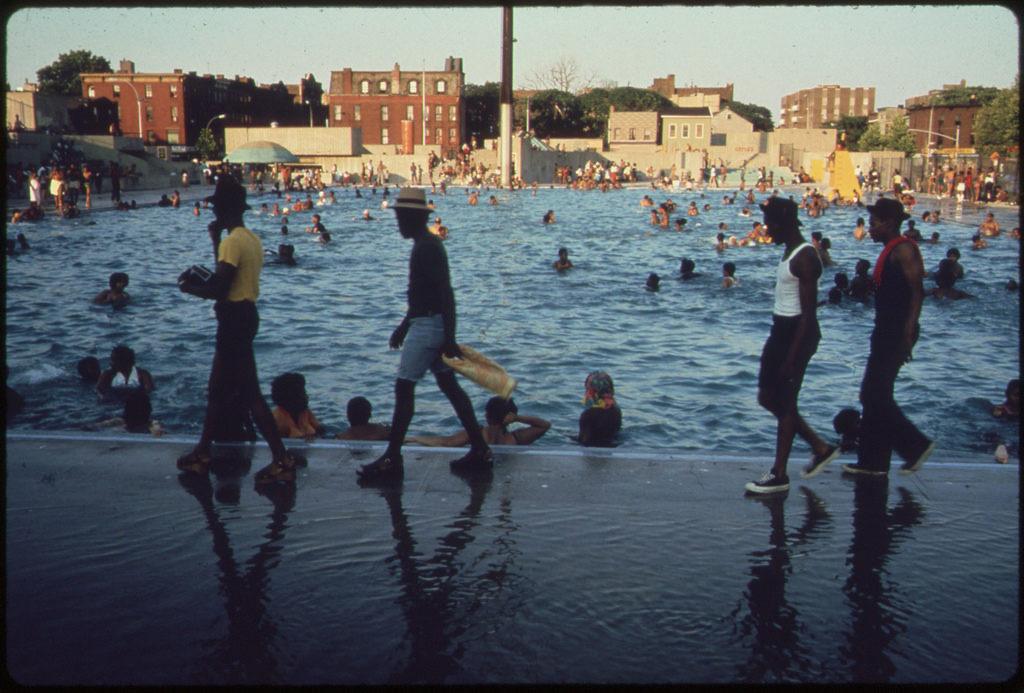
The City of New York purchased property in 1968 to provide residents of Bedford-Stuyvesant more open space and to build this community pool. Kosciusko Public Swimming Pool then underwent restorations from 1994 to 2000, which included reconstructing the electrical system of the complex, renovating the mechanical system, rebuilding the pool and portions of the concrete decks, improvements to the bathhouse, installation of an alarm system, and other architectural repairs. The cost of the renovation was over $2 million.
This article originally appeared on Flipspins.com.


